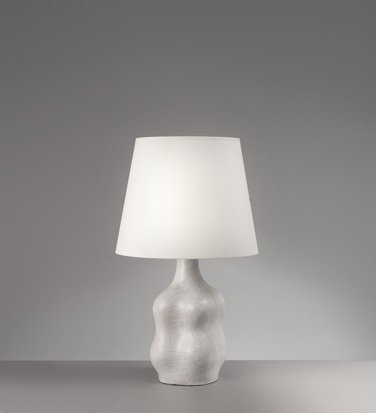Georges Jouve
Georges Jouve (1910–1964), born in Fontenay-sous-Bois, is regarded as one of the greatest French ceramists of the twentieth century. Trained at the École des Arts Appliqués in Paris, he first pursued sculpture and theatrical set design, but the war redirected his path. Captured and later escaped, he took refuge in Dieulefit, a historic pottery center, where he discovered clay and developed the language that would define his career.
Returning to Paris in 1944, he opened his studio and quickly established a distinctive style: pure, sensual forms covered in deep glazes, most famously his signature matte and glossy black. His creations stand between utility and sculpture: stylized amphorae, anthropomorphic bottles, totemic figures, ceramic coffee tables, and lighting pieces. He also embraced monumental works and architectural ceramics while retaining the hand of a sculptor.
Jouve regularly exhibited in the most important postwar salons: the Salon des Artistes Décorateurs, the Salon des Tuileries, and the Salon des Métiers d’Art, and presented work abroad as well. In 1958, he took part in the Brussels World’s Fair (Expo 58). His pieces were also showcased by leading galleries, most notably Galerie Steph Simon in Paris, alongside contemporaries such as Charlotte Perriand, Jean Prouvé, and Jean Royère.
Though his career was cut short by his death in 1964, his output was intense and highly influential. Today, his works are held in major collections, including the Musée des Arts Décoratifs in Paris, the Centre Pompidou, and the Musée National de Céramique in Sèvres, and he has been honored with retrospectives such as the 1991 exhibition at the Musée des Arts Décoratifs. Jouve’s legacy is that of an artist who elevated ceramics to the realm of fine art, blending reinvented archaism with radical modernity.



